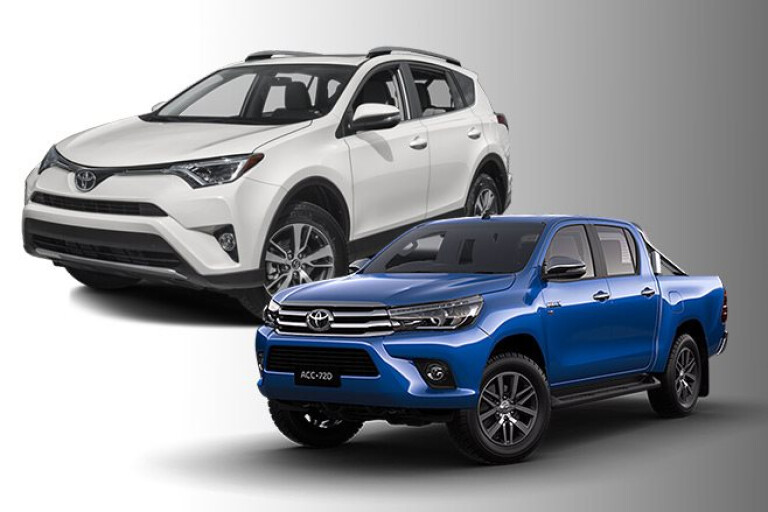
As cars pack on the pounds, Deano discusses whether bigger really is better.
People are getting bigger and heavier. According to research conducted by the US Centers for Disease Control and Prevention’s National Center for Health Statistics, since the early 1990s the average weight of an American has gone up by 7kg, from 82kg to 88kg. That’s an increase of around 7.3 per cent in the past 20 years. And you can bet that, as with everything else, Aussies are blindly following in Americans’ footsteps.
While this is certainly a significant increase, people ain’t got nothing on four-wheel drives when it comes to packing on the pounds. From small four-wheel drives to big ones and everything in between (including 4x4 utes), weight gains of 20 to 30 per cent in the past two decades are common and seemingly acceptable.
Back in 1998 a five-door automatic Toyota RAV4 had a listed kerb weight of 1245kg, whereas today a five-door auto RAV4 tips the scales at 1615kg. That’s an increase of close to 30 per cent! Step up to a five-door auto Toyota Prado and the weight increase over the same period is 21 per cent (1848kg to 2235kg), while a Land Cruiser is also up 21 per cent (2270kg to 2740kg) and a double cab Hilux is up 20 per cent (1723kg to 2075kg).
Of course, increasing vehicle weight isn’t specific to Toyota; it’s the same with every vehicle manufacturer.
Unlike people, an increase in vehicle weight isn’t necessarily a bad thing. There are several positive reasons why vehicle weights have increased so significantly.
One of the main reasons for increased vehicle weight can be attributed to advances in both passive and active safety. Stronger vehicle structures with added crumple zones and rigid passenger cells obviously can’t be achieved without adding more material and hence more weight. The addition of components such as ABS hardware, various sensors, cameras and airbags also contribute to an increase in overall weight.
Another factor in increased vehicle weights is the desire to provide vehicle occupants with lower NVH levels and a driving experience that’s more isolated from what’s happening on the outside of the vehicle. Thicker glass, more sound-deadening materials and more supple body mounts all add to overall weight.
Then, of course, there is the consumer expectation that bigger is better, so vehicle manufacturers tend to provide a larger vehicle with each model update so that punters will have a tangible reason to upgrade on a regular basis. Yep, just like capitalism, it only really works when there’s continual and steady growth.
But, unlike capitalism, there are downsides to continual and steady growth when it comes to vehicle size and weight. Think negative effects on handling, acceleration and braking performance, increased fuel consumption, more wear and tear on consumables such as tyres and brake pads, and, importantly, decreased payload capacity.
Bulldust: Is technology so bad?
What about consumers who don’t want a bigger, heavier vehicle? Well, the vehicle manufacturers have got that problem covered each and every time they introduce a new sub-category. Yep, the RAV4 might be much bigger than it was, but for those after something smaller, Toyota has now introduced the C-HR, which is almost the same size and weight as the original RAV4 (it’s actually a trifle bigger and heavier). Likewise, Nissan offers the Juke below the X-Trail, Mitsubishi the ASX below the Outlander, Jeep the Compass below the Cherokee, and so on and so forth.
While hardly comparing apples with apples, it’s worth mentioning the extreme growth of Mini over the past 58 years. The original Morris Mini Minor 850 measured a diminutive 3054mm (L), 1410mm (W), 1346mm (H) and weighed just 625kg. Today, a Mini Countryman measures 4109mm (L), 1789mm (W), 1561mm (H) and weighs 1430kg. Yep, the Mini’s no longer very mini. In fact, you could say it’s twice the car it used to be, having packed on an astonishing 228 per cent in weight. That’s also not a direct comparison given the Countryman is an SUV.
Want to go one better? A current model Fiat 500X weighs three times as much as the original Fiat 500 from whence it gets its name. Now that’s some very serious weight gain.

COMMENTS